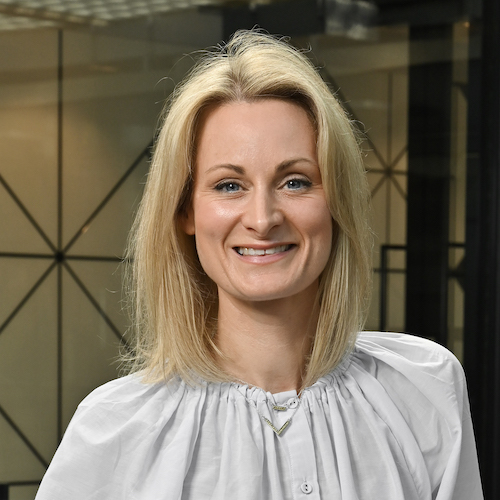Q&A: Eddie Bowman of Simmons & Simmons discusses the use of thought leadership in SMEs
Emily Taylor Gregory

Eddie Bowman, Marketing and Business Development Director at Simmons & Simmons
Following FT Longitude’s latest breakfast seminar, Eddie Bowman, Marketing and Business Development Director of the law firm Simmons & Simmons, discusses the challenges and opportunities in using thought leadership in a smaller company. Before joining Simmons & Simmons, Eddie spent time at the professional service firms EY and Andersen (now Accenture).
.
FT Longitude:
.
.
.
Eddie:
.
.
.
.
.
FT Longitude:
Eddie:
.
.
.
.
.
.
.
.
.
.
.
FT Longitude:
Eddie:
.
.
.
.
.
.
.
.
.
.
.
.
.
.
.
.
.
.
FT Longitude:
Eddie:
.
.
.
.
.
FT Longitude:
.
.
Eddie:
.
.
.
.
.
.
.
.
Welcome, Eddie. You have a wealth of experience building first-class marketing campaigns at some of the world’s largest consultancy firms. You must’ve learned a lot over the years. What’s the most common mistake you see people making when it comes to thought leadership?
It sounds obvious, but I think the single biggest mistake people make is to not have some leading thinking. If it doesn’t say something that’s interesting and relevant to the people you want to speak to, then don’t bother. This sets the bar really high because it’s very difficult to come up with new insights, particularly around the topics we all want to talk about – digital transformation, AI, etc. — so you have to work hard to find an original perspective.
How does that particular challenge compare working in a smaller firm?
Whether you’re working for a $26 billion company like EY, or a $300 million company as I do now, the issues are exactly the same. The single biggest challenge in my experience is always internal engagement. It’s crucial to get your team engaged in your project and communicating your thought leadership with the clients. If you can’t get them thinking like you, then your project’s going to fall at the first hurdle.
It helps to identify a few champions within the organisation. These are the people you can inspire to be involved from the beginning and will be prepared to fight for it with you, every step of the way. Start with getting just a few key people on board first, but it’s imperative that they believe in the idea and trust that if they invest this amount of money and time in helping to champion it, you’re capable of delivering for them. Then they’ll also help you take it to market.
Once you’ve got them on board, how do you go about designing a campaign?
It’s easy to fire thousands of bullets into the air and watch where they land. But that’s not smart thought leadership – it’s not a good way to spend your hard-earned marketing dollars, especially if you’re in an SME like Simmons & Simmons. You need initiatives that are bigger and better, it doesn’t matter if they’re more sporadic.
When I was at EY, we felt we were more organised and globally structured than the rest of the Big Four consultancies at the time. Technically speaking, we probably were. But to highlight our expertise, we built a Globalisation index. It was a really cool piece of kit that analysed how economically open countries are, how their culture has developed and how they work with other people. It was a really interesting piece of pure thought leadership – taking the data from original research and packaging it up into a ranking tool. Whilst, at the time, it was quite difficult to attribute individual sales to the tool, it worked incredibly well as a reputational lever.
When it comes to the return on investment, it goes without saying that you need to be able to track it all. Of course, now [in the digital age] you can put numbers to everything, but if you can trace it back to sales, that’s when people really sit up and listen up – that’s the holy grail. That’s what’s worked best for me at both EY and Simmons & Simmons.
Do you see technology as a friend or foe to the industry?
We all think that technology is fast and effective; just push a button and it works first time. But quite often that isn’t the case. I genuinely think it could be 50 or 60 years before technology is working intuitively, and we’ll look back on our current age of technological brilliance, and think: “My God, it was a complete basket case”.
Having said that, it’s incredibly vital. You’ve got to have it.
Finally, at FT Longitude we often talk about the importance achieving the three R’s in your thought leadership – Reputation, Relationships and Revenue. How does this translate into a smaller business?
FT Longitude’s three R’s are quite a powerful tool for measuring thought leadership. Most larger firms would say that if you start hitting the revenue streams fairly quickly, then you’re on to a winner. But if you build really powerful thought leadership that’s aligned to your strategic priorities, then it should have a measurable effect on your reputation and client relationships as well.
For a small business, this is essential. Creating a campaign that hits all three factors is immensely impressive, and it’s vital for an SME like Simmons & Simmons to be able to compete with the larger companies who have much larger budgets!
Hear Eddie’s insights on getting the most out of your internal stakeholders:
Discover more insights from our latest event, including all the key findings and discussion points, compiled by our moderator, Kim Barnes, as well as Q&As from our other panelists, Brian Bannister at KPMG, and Harriett Hindmarsh at AECOM.
If in the meantime you’d like to find out more about how to use innovative research and content-led campaigns to achieve competitive advantage, get in touch with our team.
Speak to the team
We’ll help you to navigate and overcome any challenges you currently face and learn how to get more out of your content.
Book a meeting
About the author: Emily Taylor Gregory
Emily is our marketing director, responsible for the brand, marketing and communications strategies for FT Longitude. Emily leads our content and events programmes, as well as our speaking engagements and PR activity, working closely with our editorial and research teams to develop and promote insight and best practice at the cutting edge of thought leadership.
Before joining FT Longitude, Emily spent 14 years working in various marketing roles in the publishing and technology sectors.
 |
Tel:
+44 (0)20 7873 4770
|
Tel:
+44 (0)20 7873 4770


